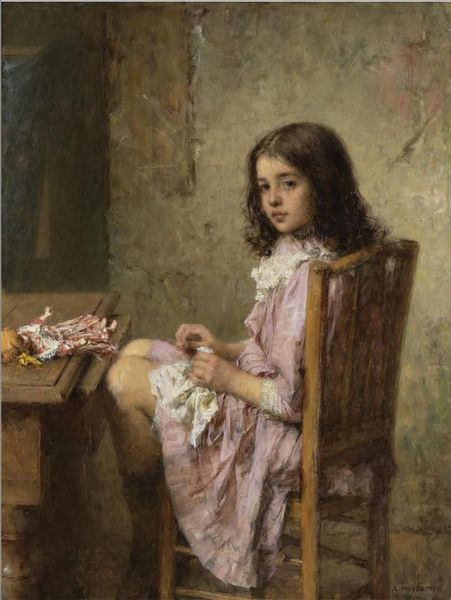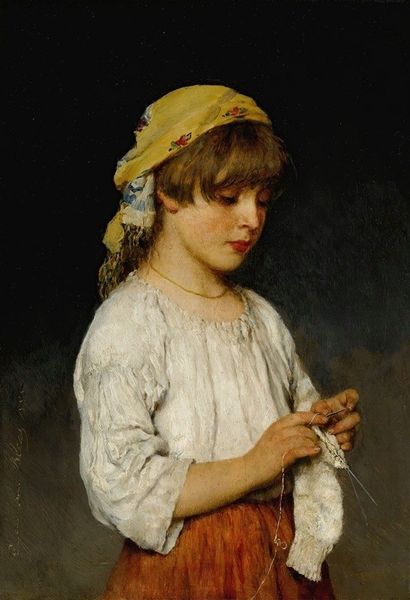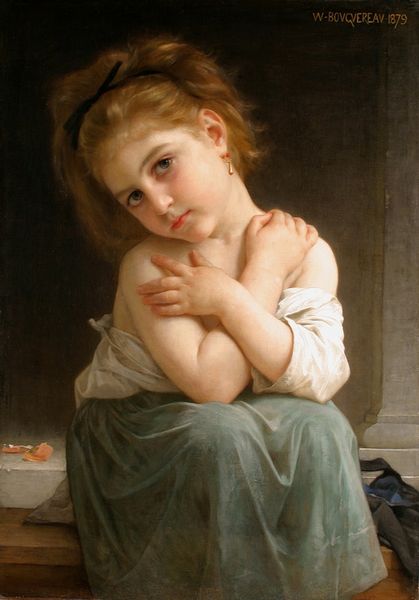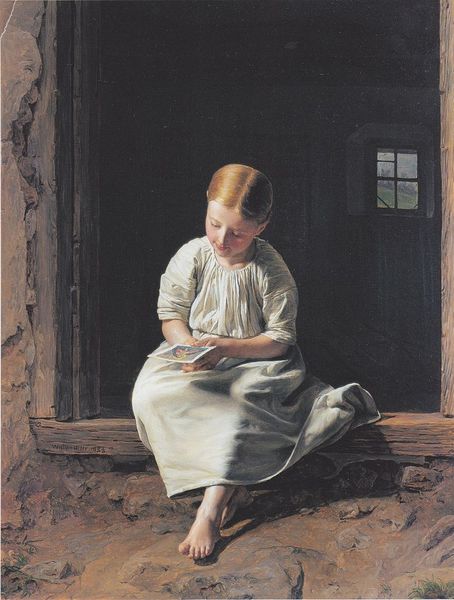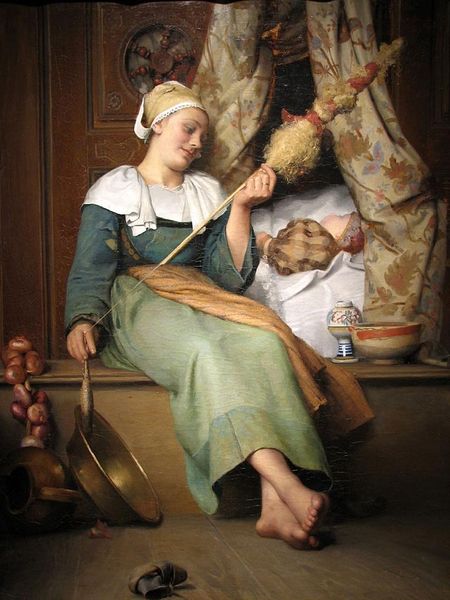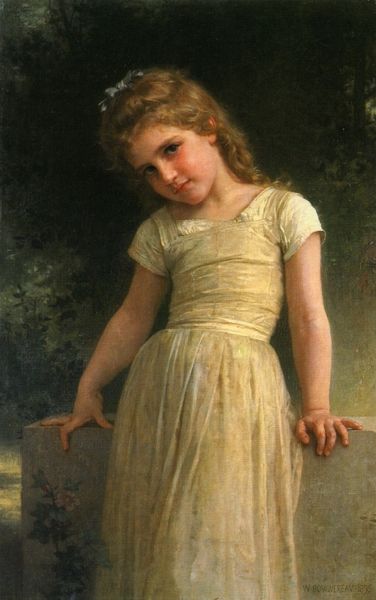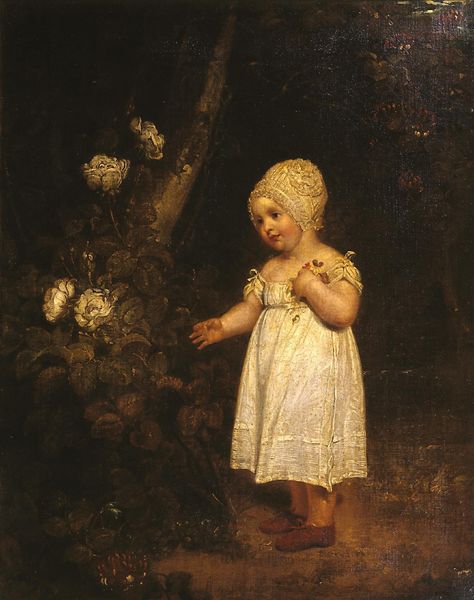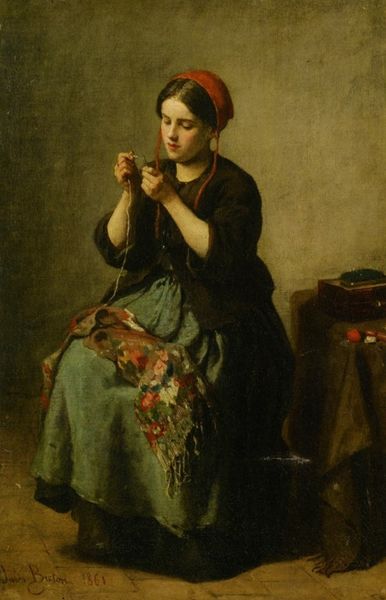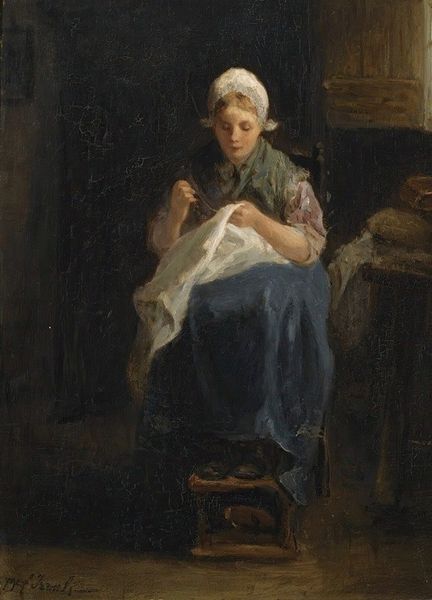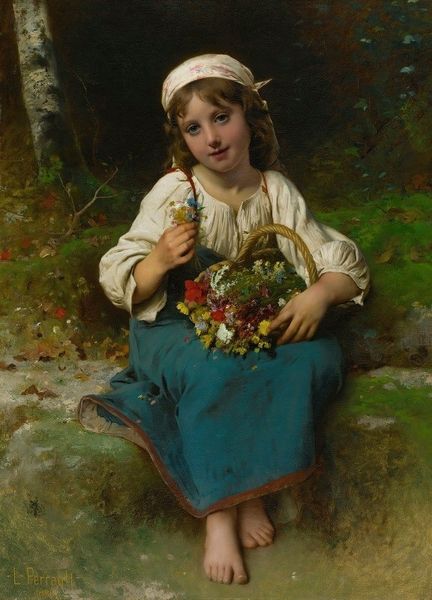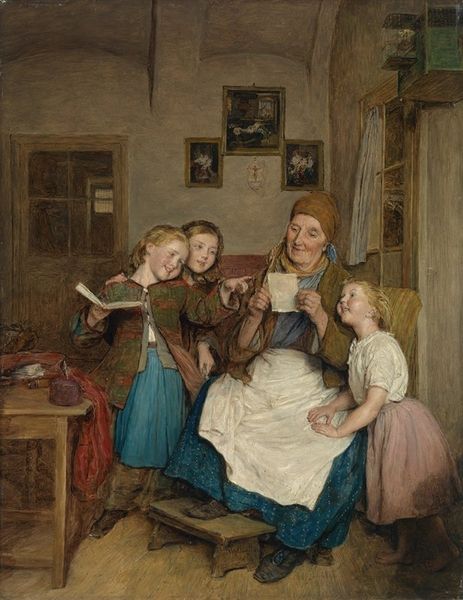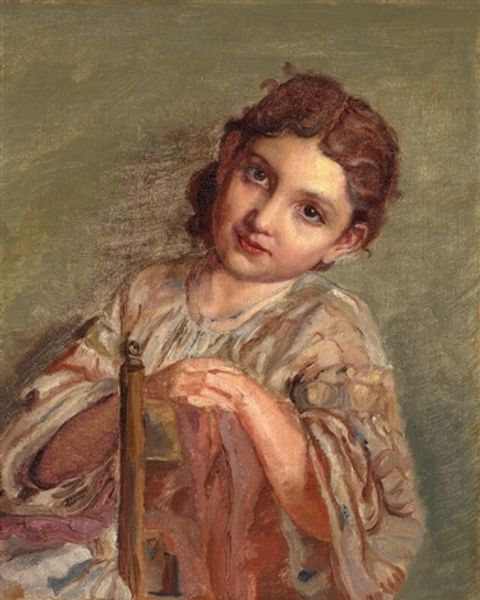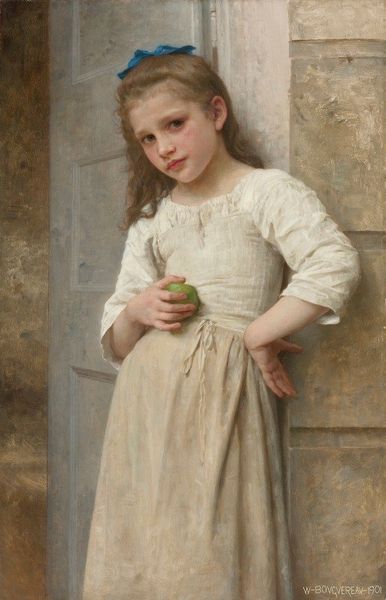
Copyright: Public Domain: Artvee
Curator: Looking at this canvas by Ferdinand Georg Waldmüller, painted in 1861, one is immediately struck by its tender intimacy. The piece is titled "The Wreath Winder". Editor: It feels like a fleeting glimpse into a private world, doesn’t it? The colors are muted, almost dreamlike, and there’s a distinct feeling of nostalgia. What is it about this painting that resonates so deeply? Curator: Waldmüller was a master of genre painting. He often portrayed scenes from everyday life, elevating them with a sense of moral sentiment. Here, we see a young girl sitting on a doorstep, absorbed in creating a floral wreath, a traditional symbol of innocence and accomplishment. The flowers themselves become emblematic of transient beauty and natural cycles. Editor: Yes, there's something deliberate about the composition. The doorway acts as a frame, separating the girl from the darker interior where those two young boys stand staring, almost as if highlighting a division between childhood and the world. Curator: Precisely! These types of images can reflect how communities reinforce norms and expected roles. A seemingly innocent act of wreath-making could be Waldmuller subtly embedding expectations of domesticity or of the performative labour around love and celebrations. Editor: It is quite striking. Her absorbed focus versus their disruptive presence… it asks a viewer to contemplate the subtle yet palpable tensions embedded within everyday life, even for a child. Thanks for your insight on this gem, Curator. Curator: It reveals, again, that our perception is framed by an understanding of tradition, custom, and implicit ideologies. The flowers are innocent. Their cultural weight is anything but. A fruitful viewing, indeed.
Comments
No comments
Be the first to comment and join the conversation on the ultimate creative platform.
